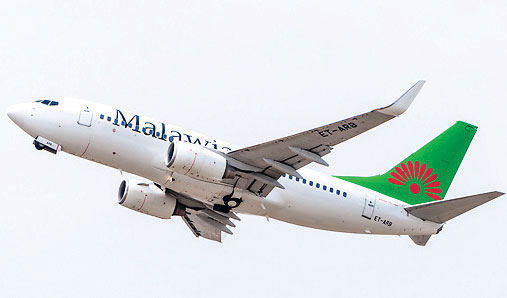After US and South Korea, Japan Battling Against Massive Wildfire, Travel Industry May Dampen, Full Checklist on Flight Cancellation and Rail Delay


Japan has joined the ranks of nations facing devastating wildfires, with blazes spreading rapidly across the western regions of the country. This comes just after the United States and South Korea also battled massive wildfires earlier this year, highlighting a disturbing global trend of increasing wildfire activity. In Japan, the fires have forced thousands to evacuate, causing widespread damage, and have put immense pressure on emergency services.
While the primary concern remains the safety of residents and firefighters, the travel industry is also beginning to feel the ripple effects. The fires have already disrupted local transportation, with road closures and flight delays in the affected areas of Okayama, Imabari, and Aso. This disruption has had an immediate impact on the local tourism sector, with popular destinations becoming inaccessible to visitors. In addition, hotels and accommodation providers in the affected regions are seeing cancellations as potential travelers opt for other destinations.
The economic impact of these wildfires extends beyond just tourism. The devastation of forests and farmland, along with the displacement of residents, is likely to dampen regional economic activity in the short term. As Japan continues to battle these wildfires, the tourism industry must brace for possible long-term effects, including decreased bookings, disrupted travel plans, and reduced tourist arrivals in the hardest-hit regions.
The growing frequency and intensity of wildfires around the world are forcing the travel industry to re-evaluate its preparedness for such natural disasters, as climate change continues to exacerbate these risks.
Japan is battling a resurgence of wildfires, with hundreds of hectares of land being scorched and widespread evacuations taking place across the western regions. The latest wave of fires erupted just days after massive blazes in northern Japan caused extensive damage, burning nearly 3,000 hectares. This recent surge in wildfires has placed a strain on firefighting resources and is also disrupting local travel, with hundreds of families forced to flee their homes.
Firefighting Efforts and Evacuations Across Western Japan
As of Tuesday, fire teams have been working tirelessly to contain the flames that erupted on Sunday in the western towns of Okayama, Imabari, and Aso. The fires, fanned by dry weather and the accumulation of fallen leaves, spread rapidly, threatening communities and causing significant damage to both property and land. Local authorities responded swiftly, with evacuation orders issued for thousands of residents, particularly in Imabari, where ongoing blazes are estimated to have consumed over 214 hectares of land.
In Okayama, the flames destroyed at least six homes, with over 250 hectares of land being consumed by the fire. Fortunately, by Tuesday, the situation had improved in Okayama, and evacuation orders were lifted. However, in Imabari, evacuation orders remained in place, affecting 553 people across 1,079 households. The neighboring city of Saijo also saw evacuation orders impacting 792 people across 1,506 households. This brings the total number of evacuees in these areas to over 3,000 individuals, with local authorities working to ensure their safety.
The Aftermath of Northern Japan’s Fires and the Ongoing Threat
This fresh outbreak of wildfires follows a devastating blaze in northern Japan just days earlier, which caused almost 3,000 hectares of land to burn—an area roughly equivalent to a tenth of the land in the affected region. Experts have identified dry weather as a key factor in this explosion of fires, with seasonal conditions exacerbating the spread of flames across forested regions.
The widespread fires are also taking a toll on emergency responders. In Imabari, a firefighter was injured while battling the inferno on Shikoku, Japan’s main island. More than 14 helicopters were deployed to assist in firefighting efforts, spraying water over the flames to contain their spread and help with disaster relief. This quick response was critical, especially in the face of ongoing danger to local communities and businesses.
Travel Disruptions and Economic Impact of the Wildfires
The wildfires in Japan have disrupted local travel, particularly in the affected regions of Okayama, Imabari, and Aso. As evacuation orders continue, road closures and flight delays have been reported, especially in areas near the fires. The fires have made air travel and road transportation in the region a challenge, as helicopters and fire trucks have occupied major transport routes. The local tourism industry in these regions is also suffering, as several sites in Okayama and Ehime prefectures are now inaccessible to tourists due to the fires.
Local authorities are working to keep public services running smoothly, but the unpredictability of the fires remains a concern for both residents and travelers. While the fire in Aso was extinguished early on Monday, the situation in Imabari remains critical, and officials are on high alert, anticipating the potential for further flare-ups as weather conditions persist.
The Role of Weather and Local Conditions in Fire Prevention
Experts have cited dry weather and the presence of dry, fallen leaves on the forest floor as the primary contributors to the rapid spread of fires in Okayama and Imabari. As Japan experiences hotter and drier conditions due to climate change, the risk of wildfires has increased, and authorities are focusing on improving fire prevention strategies. Local government officials are also looking into better systems for early detection and response to limit the impact of wildfires in the future.
Looking Ahead: Japan’s Ongoing Battle with Wildfires
With the immediate threat of the wildfires in Okayama subsiding, attention is now focused on containing the fire in Imabari and mitigating the risks of further outbreaks. The ongoing efforts to control the wildfires demonstrate the resilience of Japan’s firefighting teams, but the challenges posed by changing weather patterns highlight the need for improved fire management strategies.
The fire incidents across western Japan serve as a reminder of the volatile nature of natural disasters and the vital importance of proactive disaster preparedness. As the situation continues to develop, travelers are advised to stay updated on evacuation orders, road closures, and possible disruptions in local transportation networks. The wildfires are also likely to have a long-term impact on tourism and local businesses, particularly in the affected regions of Okayama, Imabari, and Aso.
In case you missed it:
Read Travel Industry News in 104 different regional platforms
Get our daily dose of news, by subscribing to our newsletters. Subscribe here.
Watch Travel And Tour World Interviews here.
Read more Travel News, Daily Travel Alert, and Travel Industry News on Travel And Tour World only.
The post After US and South Korea, Japan Battling Against Massive Wildfire, Travel Industry May Dampen, Full Checklist on Flight Cancellation and Rail Delay appeared first on Travel And Tour World.
What's Your Reaction?
 Like
0
Like
0
 Dislike
0
Dislike
0
 Love
0
Love
0
 Funny
0
Funny
0
 Angry
0
Angry
0
 Sad
0
Sad
0
 Wow
0
Wow
0














































